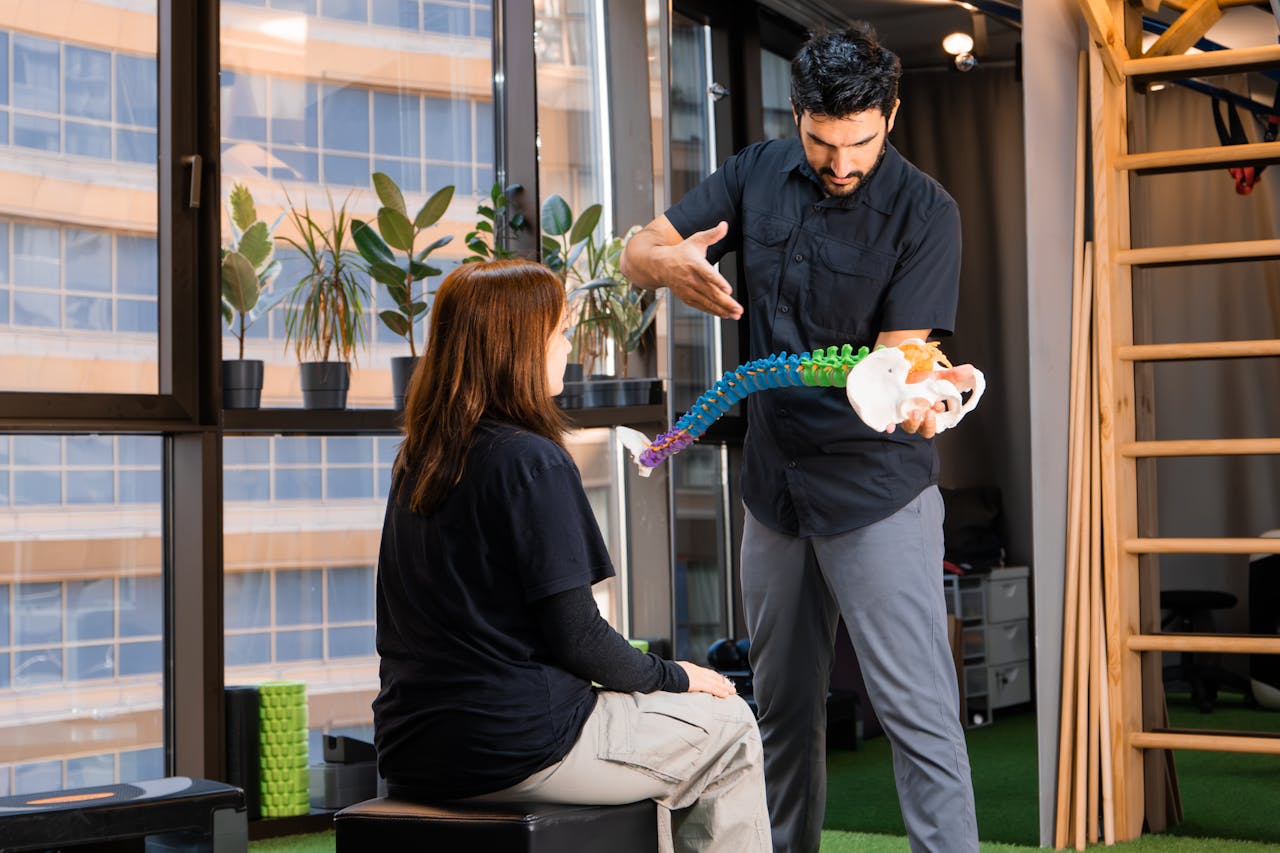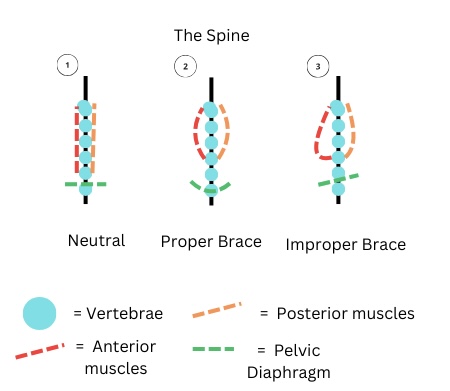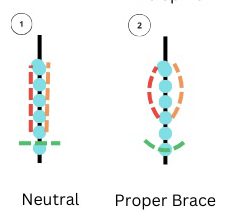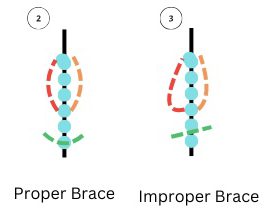The Spine & Bracing
The most miss understood joints in the body, the spine. Made up of many individual joints, as seen in the images above by the blue circles stacked vertically.
Running down our body as a center column surrounded by both anterior musculature (Red line) being our pecs and abdominal muscles, as well as posterior musculature (Orange line) being everything that makes up our back.
Being in this unique position, our spine is used all the time during exercise even when we don’t think it is. All the while when we exercise we are constantly bracing to help stabilize ourselves. In this article we’ll focus on how we can brace our spine more efficiently as well as the relation between the spine and our diaphragms.
The Spine Diaphragm Relation
To start off lets look at the components that make up our 2 diaphragms in the body. Above you can see two pictures of our torso depicted using 4 main parts. These 4 being both anterior and posterior musculature, the spine itself as well as our pelvic floor.
Our pelvic floor will make up one of the 2 diaphragms, the second coming from a combination of o our spine and all the surrounding musculature creating something called the thoracic diaphragm. You can think of these 2 come together to create an empty pop can like entity that surrounds our spine.
The Bracing
So now that we’ve established the relation between our diaphragms and spine, lets dive into how we can create better bracing. We can think of bracing almost like filling up that empty pop can, without any filling the can will be easily squished and dented, but when we fill that same can it will easily support a tremendous amount of weight.
Similarly, bracing into our diaphragms does the same thing to our body when we’re lifting, creating internal pressure to resist the outside forces of weight training.
In image 1 you can see what a nice brace would look like on somebody. Notice how both sides of our spine are expanded as well as our pelvis, not only that but the congruency of everything is relatively symmetrical. Just like a nice cylindrical pop can.
In image 2 you can see what a not so nice brace looks like. Notice the pelvis out of line as well as no real congruent expansion surrounding the spine to help support it. Similarly, if you dent that nice cylindrical pop can from any side in compromises the internal pressures created, just like our body.
Final Thoughts
Of everything I covered today I hope you take this main point from it all.
What makes a strong brace is congruency through expansion surrounding the spine and through your pelvis.
Any inconsistencies can easily be spotted from a side angle video shot of you performing a lift. Watch for inadequate expansion into your thoracic cavity or displacement of the pelvis at any point in the lift.
Hopefully this can help some who struggle with this like I have in the past.
Coach Palfrey







